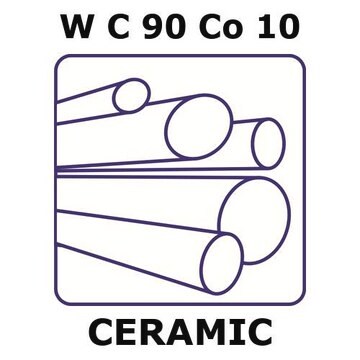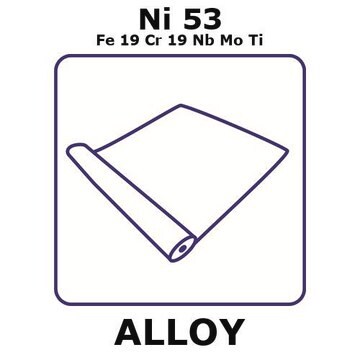GF29665086
Beryllium
wire reel, 0.2m, diameter 0.5mm, annealed and clean, 99%
Synonyme(s) :
Beryllium, BE005125, Glucinium
About This Item
Produits recommandés
Pureté
99%
Forme
wire
Température d'inflammation spontanée
1198 °F
Fabricant/nom de marque
Goodfellow 296-650-86
Résistivité
4.46 μΩ-cm, 20°C
L × diam.
2 m × 0.5 mm
Point d'ébullition
2970 °C (lit.)
Pf
1278 °C (lit.)
Densité
1.85 g/mL at 25 °C (lit.)
Chaîne SMILES
[Be]
InChI
1S/Be
Clé InChI
ATBAMAFKBVZNFJ-UHFFFAOYSA-N
Vous recherchez des produits similaires ? Visite Guide de comparaison des produits
Description générale
Informations légales
Mention d'avertissement
Danger
Mentions de danger
Conseils de prudence
Classification des risques
Acute Tox. 3 Oral - Carc. 1B - Eye Irrit. 2 - Skin Irrit. 2 - Skin Sens. 1 - STOT RE 1
Code de la classe de stockage
6.1C - Combustible acute toxic Cat.3 / toxic compounds or compounds which causing chronic effects
Classe de danger pour l'eau (WGK)
WGK 3
Point d'éclair (°F)
Not applicable
Point d'éclair (°C)
Not applicable
Faites votre choix parmi les versions les plus récentes :
Certificats d'analyse (COA)
Désolés, nous n'avons pas de COA pour ce produit disponible en ligne pour le moment.
Si vous avez besoin d'assistance, veuillez contacter Service Clients
Déjà en possession de ce produit ?
Retrouvez la documentation relative aux produits que vous avez récemment achetés dans la Bibliothèque de documents.
Notre équipe de scientifiques dispose d'une expérience dans tous les secteurs de la recherche, notamment en sciences de la vie, science des matériaux, synthèse chimique, chromatographie, analyse et dans de nombreux autres domaines..
Contacter notre Service technique










